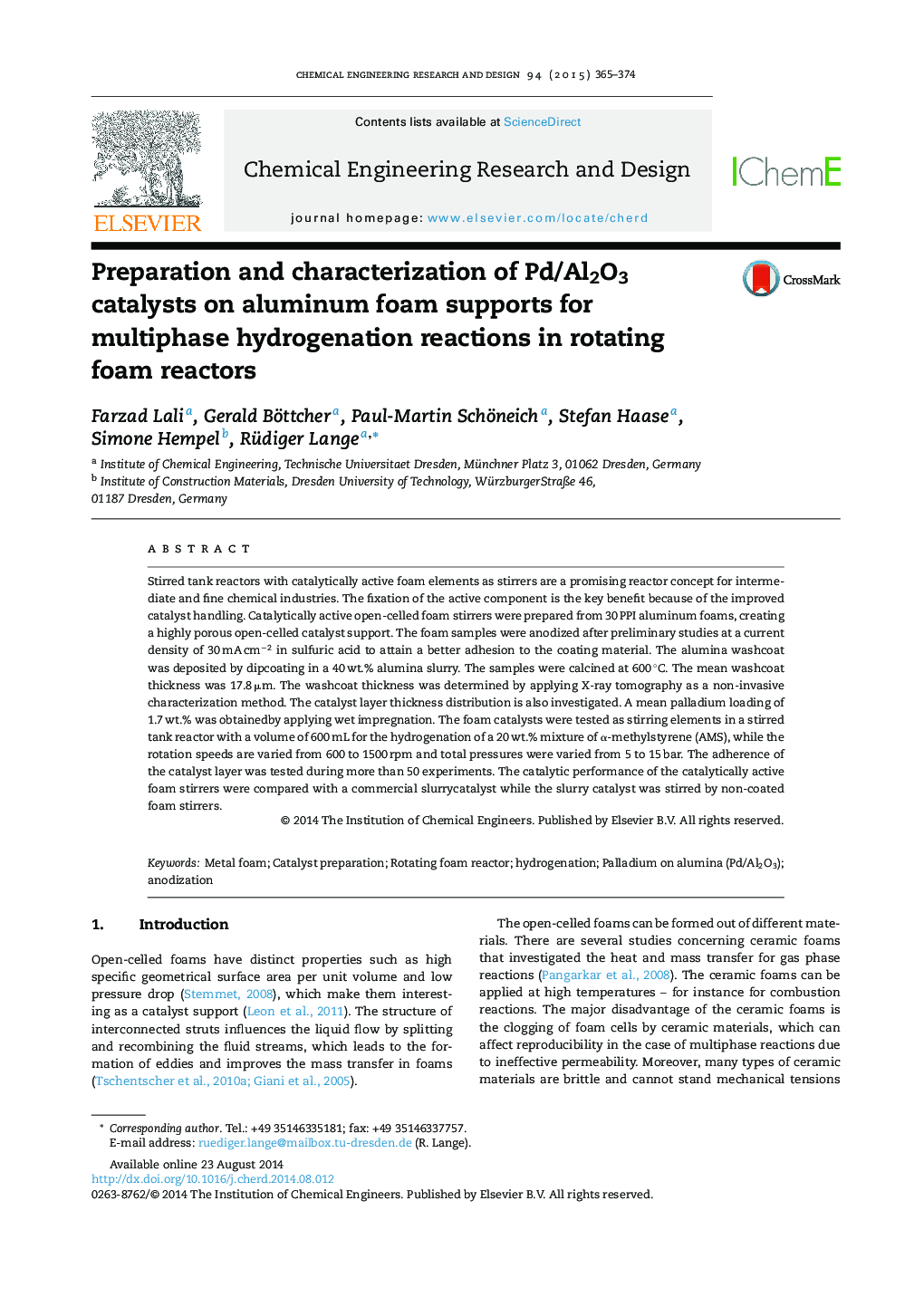| Article ID | Journal | Published Year | Pages | File Type |
|---|---|---|---|---|
| 620480 | Chemical Engineering Research and Design | 2015 | 10 Pages |
•Application of tomography to measure washcoat thickness homogeneity.•Developing a preparation method for mechanically stable Pd/Al2O3 foam catalysts.•Utilization of coated foams as a stirrer in lab-scale stirred tank reactors.
Stirred tank reactors with catalytically active foam elements as stirrers are a promising reactor concept for intermediate and fine chemical industries. The fixation of the active component is the key benefit because of the improved catalyst handling. Catalytically active open-celled foam stirrers were prepared from 30 PPI aluminum foams, creating a highly porous open-celled catalyst support. The foam samples were anodized after preliminary studies at a current density of 30 mA cm−2 in sulfuric acid to attain a better adhesion to the coating material. The alumina washcoat was deposited by dipcoating in a 40 wt.% alumina slurry. The samples were calcined at 600 °C. The mean washcoat thickness was 17.8 μm. The washcoat thickness was determined by applying X-ray tomography as a non-invasive characterization method. The catalyst layer thickness distribution is also investigated. A mean palladium loading of 1.7 wt.% was obtainedby applying wet impregnation. The foam catalysts were tested as stirring elements in a stirred tank reactor with a volume of 600 mL for the hydrogenation of a 20 wt.% mixture of α-methylstyrene (AMS), while the rotation speeds are varied from 600 to 1500 rpm and total pressures were varied from 5 to 15 bar. The adherence of the catalyst layer was tested during more than 50 experiments. The catalytic performance of the catalytically active foam stirrers were compared with a commercial slurrycatalyst while the slurry catalyst was stirred by non-coated foam stirrers.
Graphical abstractFigure optionsDownload full-size imageDownload high-quality image (131 K)Download as PowerPoint slide
